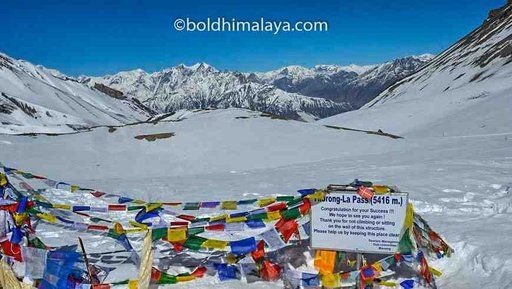Trekking Grades in Details
Trekking is the most popular outdoor activity that involves hiking or walking through natural terrains such as mountains, forests, and valleys. It can range from a simple day hike to a multi-day, multi-week journey easy to rugged and remote terrain.
Trekking is a great way to experience the culture and natural world and challenge oneself physically and mentally. It can also be a social activity, with many people choosing to go on treks with friends or organized groups.
The difficulty level of a trek can vary greatly depending on factors such as the length of the trail, the elevation gain, the weather conditions, and the level of technical skill required. Some treks are relatively easy and can be completed in a day or two, while others may take several weeks and require advanced climbing or mountaineering skills.
To determine the difficulty level of a specific trek, it is important to research the trail beforehand and consider your own physical and technical abilities.
One-Day Trekking Grades
One-day trekking is a type of trekking / Hiking that can be completed within a single day. It typically involves hiking or walking through natural terrains such as mountains, forests, or valleys and can range in difficulty from easy to moderate.
The trail usually starts in the morning and ends in the evening, and the trekker usually only camps for a while. One-day treks are shorter and less strenuous than multi-day treks & High Passes Trek and are a good option for people who want to experience the outdoors but may not have the time or resources for a longer trek.
They are also a great way for people to test their abilities and see if they are ready for more challenging multi-day treks in the future. Examples of one-day treks include a day hike to a peak with a beautiful view, a nature walk through a forest or park, or a guided tour through a protected area.
It's essential to be aware that day treks also have different levels of difficulty, so it's essential to research and be mindful of the trail's condition and your own physical and technical abilities before embarking on one. Difficulty levels of One Day Trek
Easy
Easy treks are the most accessible and suitable for people of all ages and fitness levels. They typically involve well-maintained trails with little elevation gain and minimal technical skill required.
These treks can be completed by people who may not have a lot of hiking experience, and they are a great way to experience the outdoors and test your fitness levels.
Examples of easy one-day treks include a leisurely nature walk through a park or forest, a guided tour through a protected area, or a short hike to a nearby viewpoint. If you are trekking in the Himalayan region, the elevation won't go above 3000 m(10,000 feet).
Moderate
Moderate treks are slightly more difficult than easy treks and may involve some elevation gain and steeper terrain. They are usually suitable for people with good fitness levels. These treks are good for people who want to challenge themselves a bit more but aren't ready for strenuous treks yet.
Moderate treks may include a hike to a peak with a moderate elevation gain, a trek through a valley with some rocky sections, or a hike that takes most of the day. These treks require a good level of physical fitness and some hiking experience.
Difficult
These treks are more demanding and may involve steep elevation gains, difficult terrain, and technical sections. They are suitable for people with good fitness levels and previous hiking experience. These treks are good for people who want to push themselves and test their limits.
They may include a hike to a peak with a high elevation gain, a trek through a mountainous area with rocky and uneven terrain, or a hike that takes most of the day and includes some challenging sections.
These treks require a good level of physical fitness, previous hiking experience, and the ability to navigate technical terrain.
Challenging
Challenging treks are the most demanding and may involve long distances, steep elevation gains, difficult terrain, and technical sections. They are suitable for people with good fitness levels, good previous hiking experience, and are comfortable with strenuous activities.
These treks are good for people who want to push themselves to their limits and test their abilities. They may include a hike to a peak with a high elevation gain and technical climb, a trek through a mountainous area with rocky and uneven terrain, or a hike that takes multiple days and involves multiple challenging sections.
These treks require a high level of physical fitness, previous hiking experience, and the ability to navigate technical terrain.
Multi-Day Trekking Grades
Multi-day trekking can range from a few days to several weeks, depending on the trail and the hiker's goals. Longer trekking trips often involve more strenuous hiking and more remote locations and may require more advanced planning and equipment.
On a longer trek, hikers may encounter a variety of challenges such as harsh weather conditions, difficult terrain, and altitude sickness.
Hikers need to be properly prepared for these challenges by carrying the right gear, having a good understanding of the trail and conditions, and being in good physical shape.
Longer treks also require more planning and preparation in terms of food, shelter, and route planning. Additionally, longer treks can also be a great way to disconnect from the modern world and immerse oneself in nature. It can also be a great way to challenge oneself both physically and mentally.
Grades of Multi-day Trek
Easy
These treks are suitable for beginners and those with limited hiking experience. They typically involve well-maintained trails, gentle inclines, and shorter daily distances. These treks usually don't exceed elevations of 3000 m(10,000 feet) and can be completed with a light daypack.
The daily hiking distance is usually around 5-7 miles and the total duration of the trek is usually 3-5 days. These treks are ideal for those who are looking to get into hiking and want to experience the beauty of the outdoors without pushing themselves too hard.
They are also suitable for families with children who are interested in hiking.
You May Be Interested In: Trekking in Nepal for Beginners
Moderate
These treks are suitable for those with some hiking experience and a moderate level of fitness. They typically involve longer daily distances and steeper inclines and may include some rocky or uneven terrain. These treks usually don't exceed elevations of 14,000 feet and can be completed with a moderate-weight daypack.
The daily hiking distance is usually around 7-10 miles and the total duration of the trek is usually 5-7 days. These treks are ideal for those who are looking to challenge themselves a bit more and want to experience more remote areas and scenic views.
They require a moderate level of fitness but are still suitable for most people who are used to regular exercise.
Difficult
These treks are suitable for experienced hikers and those with a high level of fitness. They typically involve long daily distances, steep inclines, and challenging terrain, such as rocky or uneven trails, and may involve crossing high-altitude passes. These treks usually don't exceed elevations of 16,000 feet and may require the use of a heavy daypack.
The daily hiking distance is usually around 10-15 miles and the total duration of the trek is usually 8-10 days. These treks are ideal for those who are looking for a serious challenge and want to experience the most remote and rugged areas of the mountain range.
They require a high level of fitness and prior hiking experience and are not suitable for those who are not used to regular exercise or are not in good physical condition.
Also, Read This: High Passes Treks in Nepal
Very Difficult
These treks are suitable for experienced hikers and those with a high level of fitness. They typically involve long daily distances, steep inclines, and challenging terrain, such as rocky or uneven trails, and may involve crossing high-altitude passes. These treks usually exceed elevations of 16,000 feet and may require the use of a heavy daypack.
Additionally, these treks may involve technical climbing, the use of crampons, and an ice axe, and will demand more physical and mental strength. The daily hiking distance is usually around 15-20 miles and the total duration of the trek is usually 11-15 days.
These treks are ideal for those who are looking for the ultimate challenge and want to experience the most remote and rugged areas of the mountain range. They require an extremely high level of fitness and prior hiking experience and are not suitable for those who are not used to regular exercise or are not in good physical condition.






